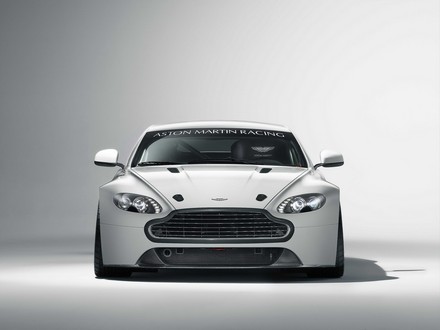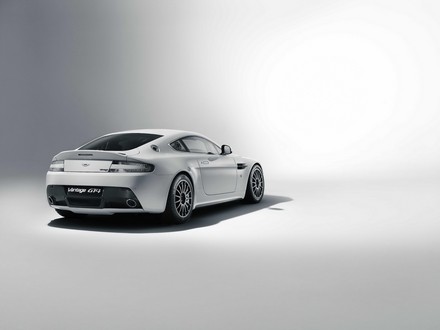Mini Cooper S, 1968



The Mini is a small car that was produced by the British Motor Corporation (BMC) and its successors from 1959 to 2000. The most popular British-made car, it has since been replaced by the New MINI which was launched in 2001. The original is considered an icon of the 1960s, and its space-saving front-wheel-drive layout influenced a generation of car-makers. In the international poll for the award of the world's most influential car of the twentieth century the Mini came second after the Ford Model T.
The revolutionary and distinctive two-door car was designed for BMC by Sir Alec Issigonis (1906�88). It was manufactured at the Longbridge and Cowley plants in the United Kingdom, and later in Australia, Belgium, Chile, Italy, Portugal, South Africa, Spain, Uruguay, Venezuela and Yugoslavia. The Mini Mk I had three major updates: The Mk II, the Clubman, and the Mk III, within which were a series of variations including an estate car, a pickup truck, a van, and the Mini Moke � a jeep-like buggy. The Mini Cooper and Cooper "S" were sportier versions that were successful as rally cars � winning the Monte Carlo Rally three times.
Design and development
Designed as project ADO15 (Austin Drawing Office project number 15), the Mini came about because of a fuel crisis. In 1956 as a result of the Suez Crisis, which reduced oil supplies, the United Kingdom saw the re-introduction of petrol rationing. Sales of large cars slumped, and there was a boom in the market for so called bubble cars, which were mainly German in origin. Leonard Lord, the somewhat autocratic head of BMC, decreed that something had to be done and quickly. He laid down some basic design requirements: the car should be contained within a box that measured 10 � 4 � 4 feet (3 � 1.2 � 1.2 m); and the passenger accommodation should occupy six feet (1.8 m) of the 10 foot (3 m) length; and the engine, for reasons of cost, should be an existing unit. Issigonis, who had been working for Alvis, had been recruited back to BMC in 1955 and, with his skills in designing small cars, was a natural for the task. The team that designed the Mini was remarkably small; as well as Issigonis, there was Jack Daniels, who had worked with him on the Morris Minor, Chris Kingham, who had been with him at Alvis, two engineering students and four draughtsmen. Together, by October 1957 they had designed and built the original prototype, which was affectionately named 'The Orange Box' because of its colour.
The ADO15 used a conventional BMC A-Series four-cylinder water-cooled engine, but departed from tradition by having it mounted transversely, placing the engine oil lubricated, four-speed transmission in the sump, and by employing front-wheel drive. Almost all small front-wheel-drive cars developed since the 1970s have used a similar configuration. The radiator was mounted at the left side of the car so that the engine-mounted fan could be retained, but with reversed pitch so it blew air into the natural low pressure area under the front wing. This location saved precious vehicle length, but had the disadvantage of feeding the radiator with air that had been heated by passing over the engine.
The suspension system, designed by Alex Moulton at Moulton Developments Limited, used compact rubber cones instead of conventional springs � this led to a rather raw and bumpy ride, but this rigidity, together with the wheels being pushed out to the corners of the car, gave the car its famous go kart-like handling. It was initially planned to use an interconnected fluid system, similar to the one which Issigonis and Moulton were working on in the mid-1950s at Alvis, but the short development time of the car meant this would not be ready in time for the launch. The system intended for the Mini was further developed to become the hydrolastic system and was first used on the Austin 1100 (launched in 1962). Ten-inch wheels were specified, so new tyres needed to be developed � with the initial contract going to Dunlop.
The car was designed with sliding windows in the doors, thus allowing for storage pockets to be fitted in the space where a winding window mechanism would have been. Issigonis is said to have sized the resulting storage bins to take a bottle of his favourite Gordon's Gin. The boot lid was designed with the hinges at the bottom so that the car could be driven with it open to increase luggage space. On early cars the number plate was hinged so it dropped down to remain visible when the boot lid was open.
To keep manual labour costs low, the car was designed with quirky welded seams that are visible on the outside of the car running down the A and C pillars and between the body and the floor pan. To further simplify construction, the car had external door and boot hinges.
The Mini Cooper and Cooper S � 1961�2000
Issigonis' friend John Cooper, owner of the Cooper Car Company, designer and builder of Formula 1 and rally cars, saw the potential of the Mini. Issigonis was initially reluctant to see the Mini in the role of a performance car - but after John Cooper appealed to BMC management, the two men collaborated to create the Mini Cooper. The Austin Mini Cooper and Morris Mini Cooper debuted in 1961.
The original 848 cc engine from the Morris Mini-Minor was increased to 997 cc, boosting power from 34 bhp to 55 bhp (25 to 41 kW). The car featured a racing-tuned engine, double SU carburettors, close-ratio gearbox and front disc brakes, uncommon at the time in a small car. One thousand units of this iteration were commissioned by management, intended for and designed to meet the homologation rules of Group 2 rally racing. The 997 cc engine was replaced by a shorter stroke 998 cc unit in 1964.
A more powerful Mini Cooper, dubbed the "S", was developed in tandem and released in 1963. Featuring a 1071 cc engine and larger servo-assisted disc brakes, 4,030 Cooper S cars were produced and sold until the model was updated in August 1964. Cooper also produced two models specifically for circuit racing, rated at 970 cc and a 1275 cc, both of which were also offered to the public. The smaller-engine model was not well received, and only 963 were built until the model was discontinued in 1965. The 1275 cc Cooper S models were discontinued in 1971.
The Mini Cooper S earned acclaim with Monte Carlo Rally victories in 1964, 1965, and 1967. Minis were initially placed first, second and third in the 1966 rally as well, but were disqualified after a controversial decision by the French judges. The disqualification related to the use of a variable resistance headlamp dimming circuit in place of a dual-filament lamp. It should be noted that the Citro�n DS that was eventually awarded first place had illegal white headlamps but escaped disqualification. The driver of the Citro�n, Pauli Toivonen, was reluctant to accept the trophy and vowed that he would never race for Citro�n again. BMC probably received more publicity from the disqualification than they would have gained from a victory - but had the Mini not been disqualified, it would have been the only car in history to be placed amongst the Monte Carlo winners for six consecutive years.
In 1971 the Mini Cooper design was licensed in Italy by Innocenti and in 1973 to Spain by Authi (Automoviles de Turismo Hispano-Ingleses), which began to produce the Innocenti Mini Cooper 1300 and the Authi Mini Cooper 1300, respectively.
A new Mini Cooper named the RSP (Rover Special Products) was briefly relaunched in 1990 to 1991, with slightly lower performance than the 1960s Cooper. It proved so popular that the new Cooper-marked Mini went into full production in late 1991. From 1992 Coopers were fitted with a fuel-injected version of the 1275 cc engine, and in 1997 a multi-point fuel injected engine was introduced, along with a front-mounted radiator and various safety improvements.






















